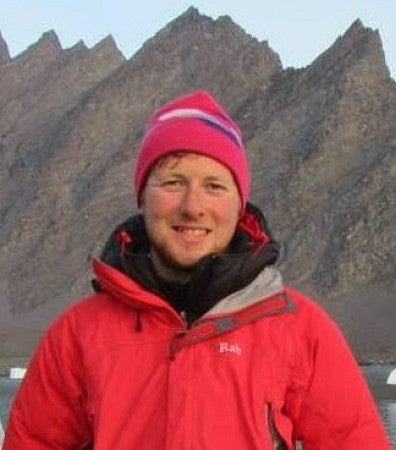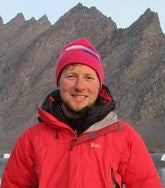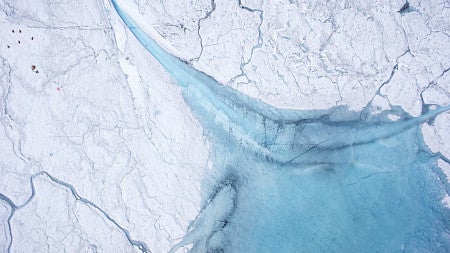
Climate change has already inscribed a story in the Pacific Northwest. Warmer temperatures, extensive wildfires and intense droughts are no longer unknown to Oregon residents. While change feels rapid here, another region is experiencing much more dramatic changes and is heating twice as fast as the rest of the world. And the impact will be felt far and wide.
The Arctic’s melting glaciers and ice sheets directly cause a rise in sea levels, worsening the effects of storm surges and those associated with coastal erosion. This can have a drastic effect on low-lying coastal communities such as those in western Oregon. While the effects of global warming and climate change in the Arctic are irreversible, researchers are finding ways to predict changes in sea-level rise movements to alleviate the anxious uncertainty surrounding our planet’s future. That’s why Johnny Ryan, an assistant professor in the Department of Geography at the University of Oregon, seeks to study the role of clouds on ice sheet melt.
Ryan’s three-year NASA grant of $290,152, titled “The Role of Clouds on Greenland Ice Sheet surface melt,” allows him to extensively research just that. The results from this research will be used to inform climate models that predict how ice sheets will respond to future climate change.


As part of this research, Ryan aims to decipher whether clouds will increase or decrease melting in response to future climate change.
Ryan’s previous research has contributed to assessment reports for the Intergovernmental Panel on Climate Change, which provide a summary of all the latest scientific findings about specific topics. These reports feature models of Greenland’s ice sheets’ response to climate change for both the last 100 years and the next 100 years.
“These models were missing a few important processes,” Ryan says. “One thing they don’t do very well is include the effect of clouds.”
Cloud accounts have been “notoriously difficult to model using common models.” Ryan’s work will try and provide more accurate benchmarks for the models.

Ryan grew up in Beverley, East Yorkshire in the UK. “I come from a small country that punches above its weight and does a lot with relatively little resources,” Ryan explains. It was quite a shock when as a PhD student, he first witnessed the number of resources and funding that research in the US receives.
“It’s amazing how lucky I’ve been,” Ryan says. “To receive support for this proposal, I think that shows that NASA is interested in funding the best science regardless of who you are.”
Ryan hopes to have many more projects funded by NASA in the future and to continue to cultivate a strong team of graduate students and researchers in the Department of Geography, which is part of the UO’s College of Arts and Sciences.
-By McKenzie Days, College of Arts and Sciences

